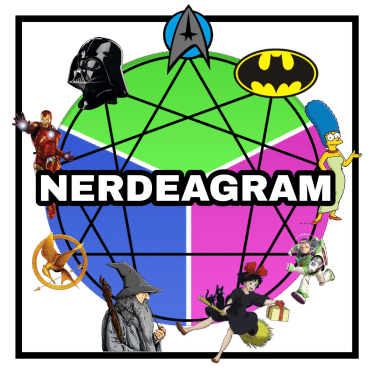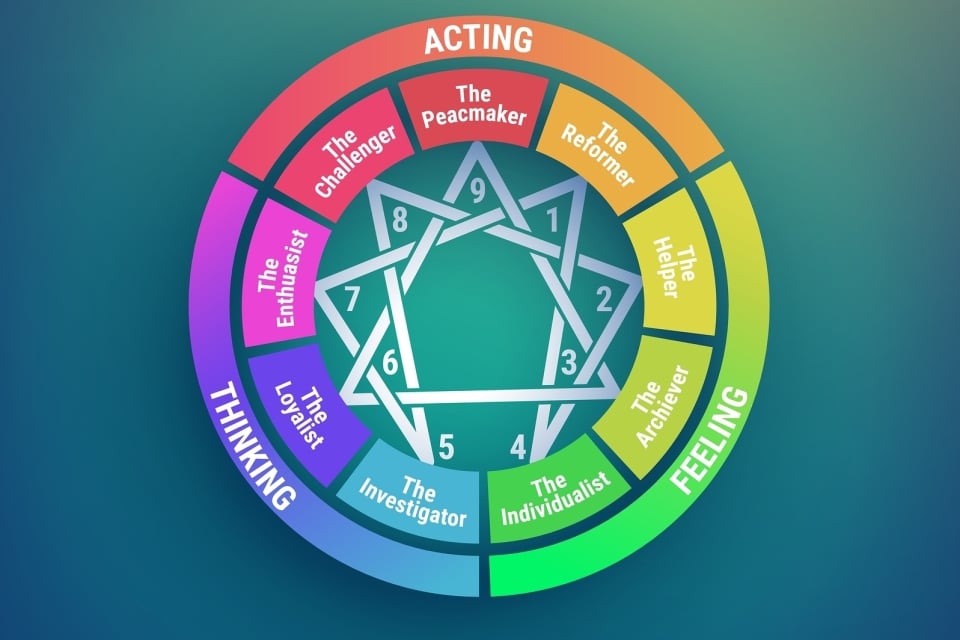The Enneagram is a personality test (somewhat similar to the Myers-Briggs test) that helps to determine one’s underlying motivators. It can help people understand themselves and others, as well as learn ways to grow. Although it’s roots can be traced back to archetypes in ancient cultures, and many philosophers throughout history had similar concepts, the modern Enneagram was first invented by a Russian mystic, George Gurdjieff, before being expanded on by Chilean psychiatrist, Claudio Naranjo, and Oscar Ichazo, a Bolivian spiritual leader.

The Enneagram is essentially a breakdown of 9 basic personality types:

- The Perfectionist
- The Helper
- The Achiever
- The Individualist
- The Observer
- The Loyalist
- The Enthusiast
- The Challenger
- The Peacekeeper
- Each of these also fit into 3 categories or ‘centers’: Thinking (5,6,7), Feeling (2,3,4), and Instinctive (8,9,1), also referred to as “Head Types”, “Heart Types” (those motivated by their emotions), and “Body Types” (who tend to go off gut instinct)
- In addition to the 9 base personality types, there are 3 variations of each, known as Subtypes, or Instinctual Variants: Self-Preservation, Sexual, and Social Instincts.
- Unlike many other personality tests (like the Myers-Briggs test), the Enneagram is flexible and fluid, affirming our own individual traits, challenges, and potential.
If you’re interested in learning where you best fit in, we highly recommend taking the free test here! (EclecticEnergies.com) For a more thorough breakdown of each type, check out Enneagraminstitute.com! (further reading and sources here!)
And if you haven’t already, check out the Nerdeagram podcast for more!












